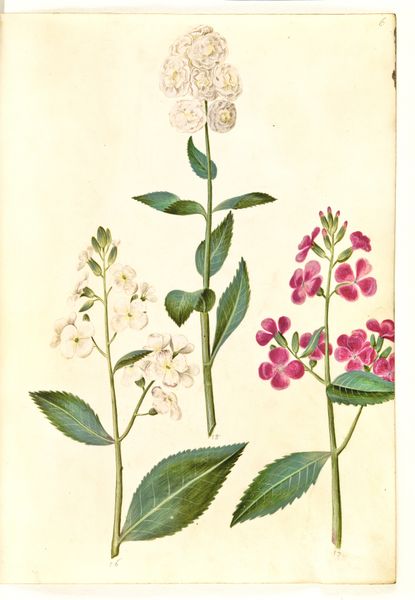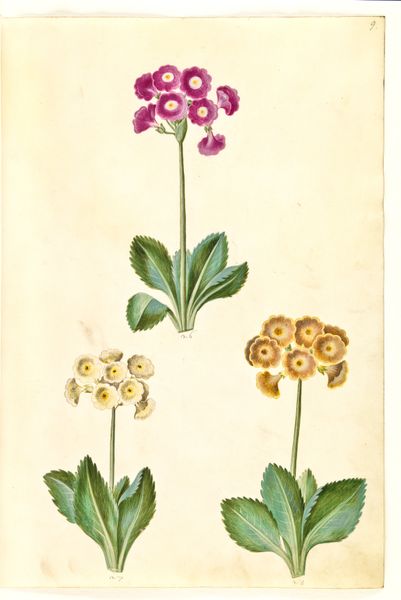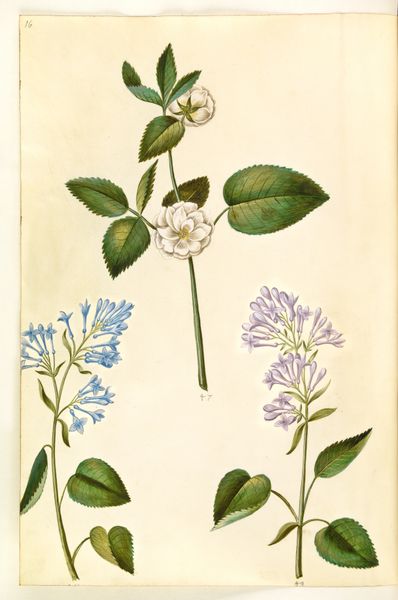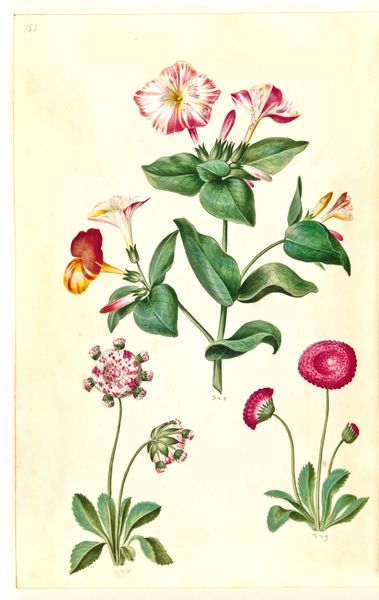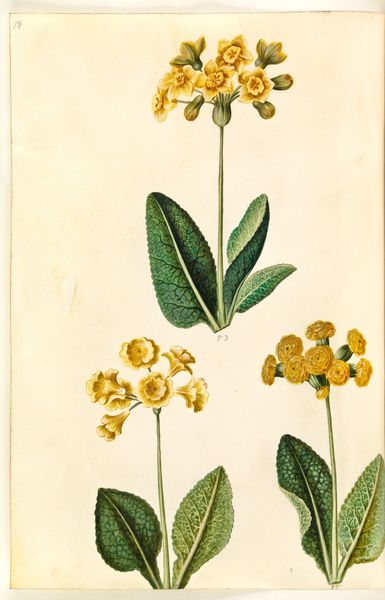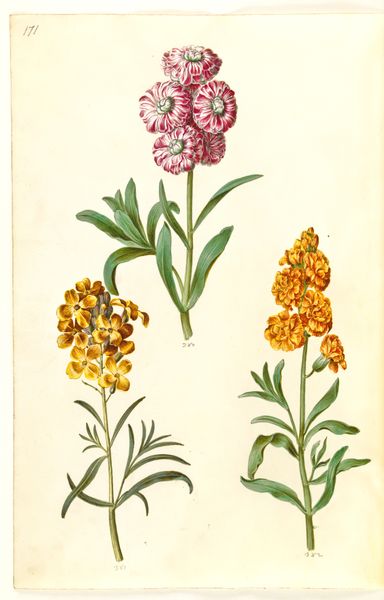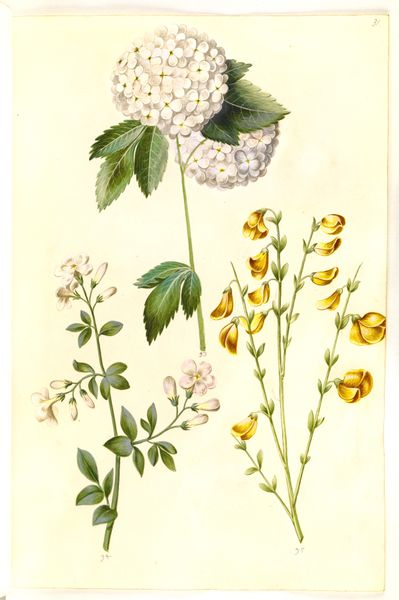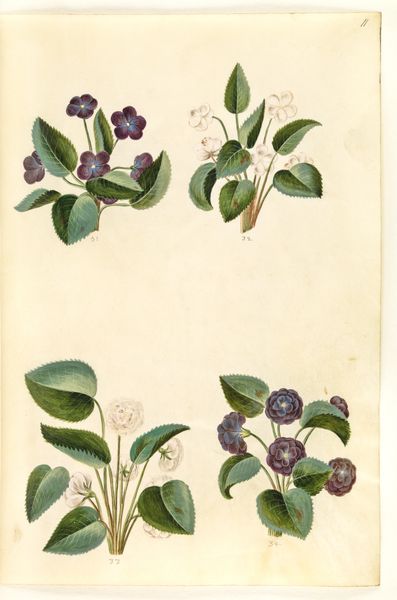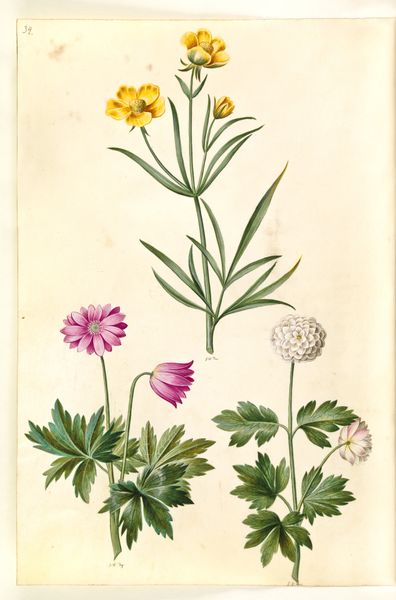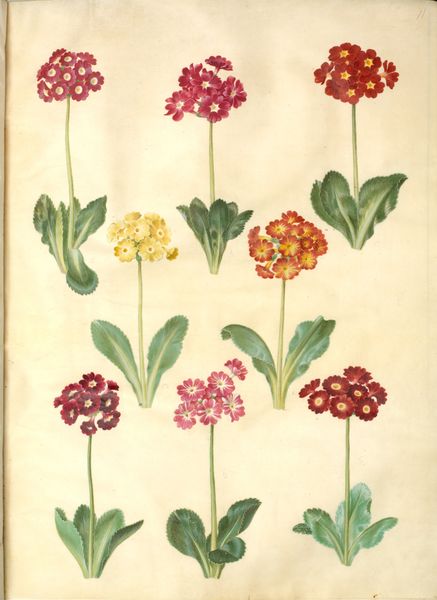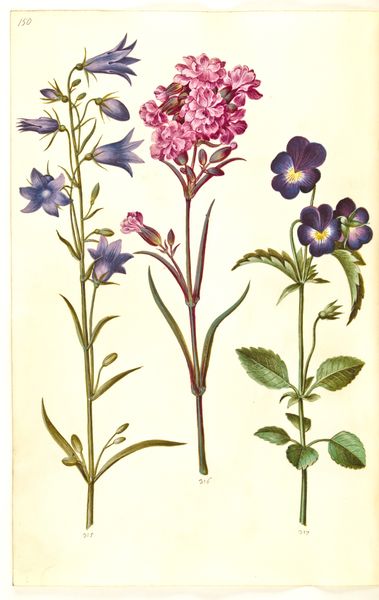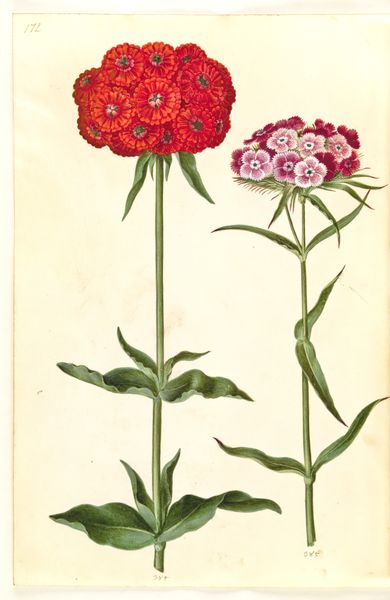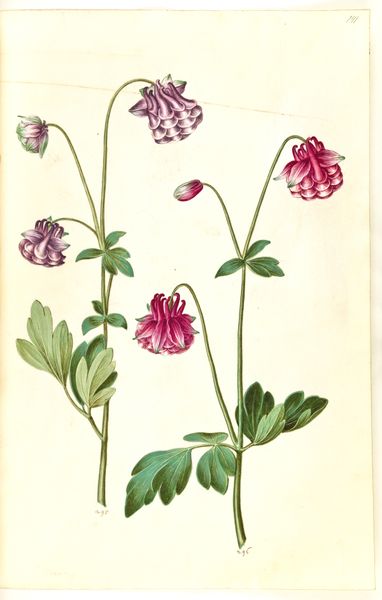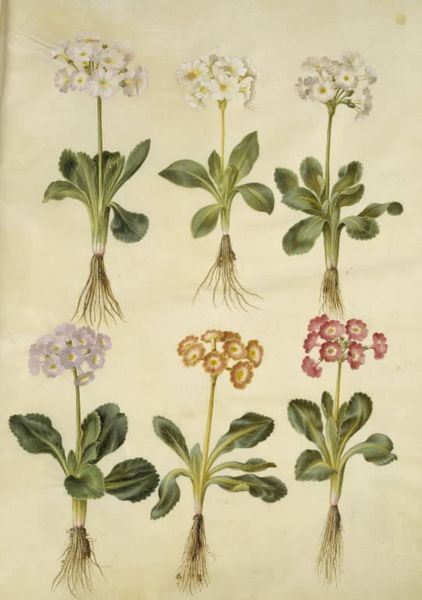
Primula vulgaris (storblomstret kodriver); Primula ×pubescens (have-aurikel) 1635 - 1664
0:00
0:00
drawing, gouache, plein-air, watercolor
#
drawing
#
dutch-golden-age
#
gouache
#
plein-air
#
watercolor
#
watercolour illustration
#
academic-art
#
watercolor
Dimensions: 375 mm (height) x 265 mm (width) x 85 mm (depth) (monteringsmaal), 358 mm (height) x 250 mm (width) (bladmaal)
Hans Simon Holtzbecker painted these primula flowers with watercolor and gouache in the 17th century. At the time, botanical illustration was gaining importance not just for science, but also as a reflection of social status and global exploration. Holtzbecker was working during a period when Europe was expanding its reach across the globe, bringing back new plants and specimens. The detailed botanical drawings were not merely scientific records, they captured a sense of wonder and conquest, marking the beginning of a shift in how Europeans perceived and interacted with the natural world. Think about how something as seemingly simple as a flower drawing becomes a statement about power, knowledge, and the changing relationship between humans and nature. This artwork represents nature but is also deeply embedded in the politics and culture of its time.
Comments
No comments
Be the first to comment and join the conversation on the ultimate creative platform.
